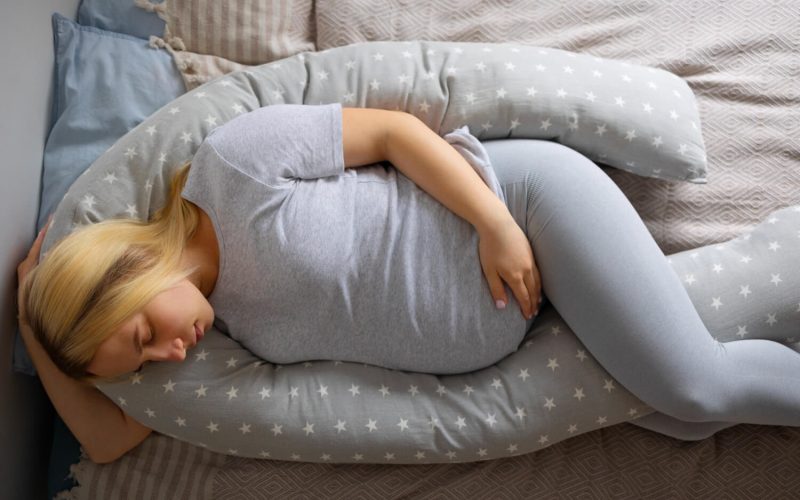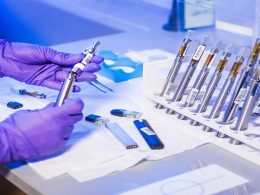Introduction
When it comes to fertility, understanding the process of ovulation is crucial. Whether you are planning to conceive or trying to track your menstrual cycle for health reasons, knowing when you are ovulating can help you make informed decisions about your body. Ovulation is the part of the menstrual cycle when an egg is released from the ovary, making it available for fertilization. For women trying to conceive, timing intercourse around this period can significantly improve the chances of pregnancy.
But how exactly do you calculate ovulation? In this article, we’ll explain everything you need to know about calculating ovulation in simple terms, so you can better understand your menstrual cycle and fertility window.
What Is Ovulation?
Before we get into the specifics of calculating ovulation, let’s briefly define what ovulation is.
Ovulation is the release of a mature egg from a woman’s ovary. This typically happens around the middle of the menstrual cycle, which lasts between 28 to 30 days for most women. However, this timing can vary depending on individual cycle lengths. Once the egg is released, it travels down the fallopian tube, where it may be fertilized by sperm. If fertilization occurs, pregnancy is possible. If the egg is not fertilized, it disintegrates, and the woman’s body will prepare for the next menstrual cycle.
Ovulation is a key event in the menstrual cycle, and for women trying to conceive, knowing when it occurs is essential to improve the chances of pregnancy.
How to Calculate Ovulation: Step-by-Step Guide

Knowing when you ovulate requires tracking various factors in your body. Here are the most common ways to calculate ovulation, along with simple steps to help you get started.
1. Track Your Menstrual Cycle
The first step in calculating your ovulation is to understand your menstrual cycle. The average menstrual cycle lasts about 28 days, but it can range from 21 to 35 days in some women. The cycle starts on the first day of your period and ends the day before your next period begins.
Ovulation typically occurs around day 14 of a 28-day cycle. However, if your cycle is longer or shorter, ovulation will happen a few days earlier or later. If you have a cycle of 30 days, ovulation will likely occur around day 16, and for a 25-day cycle, it will happen around day 11.
2. Use an Ovulation Calendar
One of the easiest ways to calculate ovulation is to use an ovulation calendar. Many online tools or apps can help you track your cycle, making it easier to pinpoint the days you are most fertile.
To use an ovulation calendar:
- Input the date of your last period and the length of your cycle.
- The calendar will predict your most fertile days based on this data.
Keep in mind that ovulation can vary from cycle to cycle, so it’s a good idea to track for a few months to get a more accurate picture of your cycle.
3. Monitor Your Basal Body Temperature (BBT)
Another method to calculate ovulation is by tracking your basal body temperature (BBT). Your BBT is your body’s temperature when you first wake up in the morning before getting out of bed. When you ovulate, your body temperature rises slightly (about 0.5 to 1 degree Fahrenheit) due to the hormonal changes triggered by ovulation.
To track your BBT:
- Take your temperature at the same time every morning, right after you wake up, using a basal thermometer.
- Record the temperature on a chart or app.
Once you see a noticeable temperature increase, you will know that ovulation has occurred, and you can use this information for future cycles.
4. Check for Cervical Mucus Changes
Your cervical mucus changes throughout your menstrual cycle and can give you clues about when ovulation is approaching. Before ovulation, cervical mucus becomes clear, slippery, and stretchy, similar to the consistency of egg whites. This type of mucus helps sperm travel through the cervix and into the uterus for fertilization.
To track cervical mucus:
- Check your mucus daily by wiping with toilet paper or inserting a clean finger into your vagina.
- Note any changes in the color, consistency, and texture of the mucus.
The days with the most fertile cervical mucus (clear, slippery, and stretchy) are your most fertile days and are when ovulation is likely to occur.
5. Use Ovulation Predictor Kits (OPKs)
Ovulation predictor kits (OPKs) are home test kits that detect the luteinizing hormone (LH) surge that happens 12 to 36 hours before ovulation. A positive test result means that you are about to ovulate, making it the best time to have intercourse if you’re trying to conceive.
To use an OPK:
- Start testing a few days before you expect to ovulate.
- Follow the instructions on the kit to check for a positive result.
- When you get a positive test, ovulation will likely occur within the next 24 to 36 hours.
OPKs are a reliable and easy way to determine when you’re ovulating, and they’re available in most pharmacies.
6. Pay Attention to Physical Symptoms
Some women experience physical signs of ovulation, including:
- Mild cramping or twinging pain on one side of the lower abdomen (known as mittelschmerz)
- Increased libido
- Sensitive or sore breasts
- Changes in the position and firmness of the cervix
Tracking these symptoms can provide additional insight into when you’re ovulating, although not all women experience these signs.
Why It’s Important to Calculate Ovulation
Understanding when you ovulate has many benefits, especially if you are trying to conceive. Here are a few reasons why it’s important to track your ovulation:
- Increased chances of conception: Knowing when you ovulate helps you time intercourse during your most fertile days, improving your chances of getting pregnant.
- Better understanding of your cycle: By tracking ovulation, you can gain a clearer understanding of your menstrual cycle and spot irregularities that may require attention.
- Health monitoring: Ovulation tracking can help you understand hormonal fluctuations, which can be important for managing conditions like PCOS (polycystic ovary syndrome) or endometriosis.
Common Ovulation Myths
There are several myths about ovulation that can cause confusion. Let’s quickly debunk some of the most common ones:
- Ovulation only occurs on day 14 of a 28-day cycle: Ovulation can happen earlier or later depending on the length of your cycle.
- You can’t get pregnant if you have irregular cycles: Even with irregular cycles, ovulation can still occur, and tracking methods can help pinpoint the timing.
- You can only get pregnant during ovulation: While ovulation is the best time for conception, sperm can live in the body for up to five days, so having sex before ovulation can still lead to pregnancy.
Conclusion: Master Your Ovulation Cycle
Calculating your ovulation can significantly improve your understanding of your body and fertility. Whether you’re trying to conceive or simply tracking your cycle for better health management, using methods like an ovulation calendar, BBT tracking, and OPKs can help you predict your most fertile days.
By learning how to calculate ovulation and track the signs of fertility, you can take control of your reproductive health and make more informed decisions. While it may take some time and practice, understanding your cycle is a powerful tool for women who want to understand their bodies better and improve their chances of conception. So start tracking today and take the guesswork out of your ovulation cycle!












